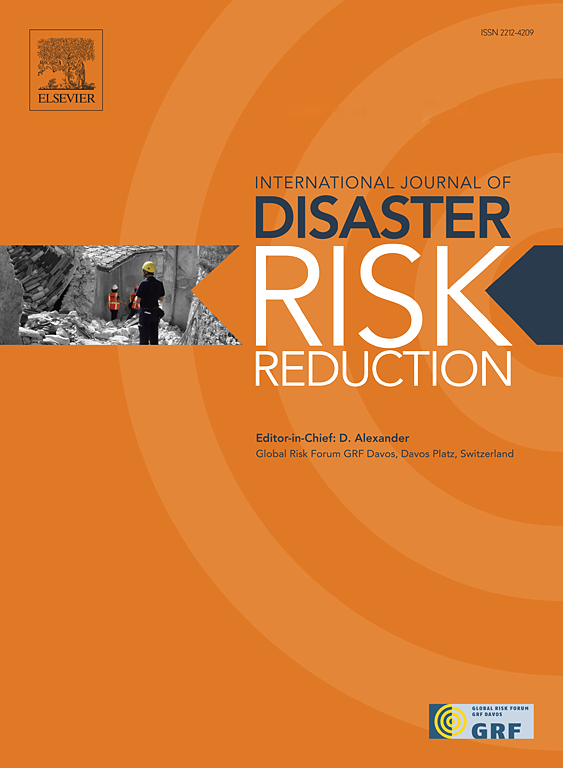基于可解释机器学习的海啸桥梁脆弱性评估
IF 4.5
1区 地球科学
Q1 GEOSCIENCES, MULTIDISCIPLINARY
International journal of disaster risk reduction
Pub Date : 2025-04-25
DOI:10.1016/j.ijdrr.2025.105507
引用次数: 0
摘要
由于近年来的气候变化和全球变暖现象,沿海桥梁经常受到海啸的危害。对这些桥梁进行风险评估对于适当的灾害管理和减灾十分重要。替代海啸需求模型(STDM)是简化脆弱性曲线发展过程的有用关系。目前的研究提出了一种基于机器学习(ML)开发stdm的新方法,用于典型沿海桥梁海啸荷载风险评估,而不是传统的蒙特卡罗模拟(MCS)方法。本研究采用12个机器学习模型来开发基于机器学习的代理海啸需求模型(MLSTDM)。然后使用性能最好的模型创建海啸脆弱性函数。结果表明,与MCS方法相比,所提出的mlstdm方法可以更准确地估计脆弱性,且模拟次数较少。此外,还使用SHapley加性解释(SHapley Additive exPlanations)分析来解释代理ML模型在预测海啸反应方面的性能。本文章由计算机程序翻译,如有差异,请以英文原文为准。
Interpretable machine learning based tsunami bridge fragility assessment
Coastal bridges are frequently subjected to tsunami hazards due to the recent climate change and global warming phenomena. Risk assessment of these bridges is important for proper disaster management and mitigation. Surrogate Tsunami Demand Models (STDM) are useful relationships for simplifying the process of development of fragility curves. The current study proposes a novel methodology to develop STDMs based on Machine Learning (ML) for the risk assessment of a typical coastal bridge due to tsunami load, instead of the conventional Monte Carlo Simulation (MCS) method. In this study, twelve machine learning models are employed for developing ML based Surrogate Tsunami Demand Model (MLSTDM). Tsunami fragility functions are then created using the best performing models. It is found that the proposed MLSTDMs can accurately estimate the fragility with fewer simulations when compared to MCS method. Further a SHAP (SHapley Additive exPlanations) analysis is used to interpret the performance of surrogate ML models in predicting tsunami responses.
求助全文
通过发布文献求助,成功后即可免费获取论文全文。
去求助
来源期刊

International journal of disaster risk reduction
GEOSCIENCES, MULTIDISCIPLINARYMETEOROLOGY-METEOROLOGY & ATMOSPHERIC SCIENCES
CiteScore
8.70
自引率
18.00%
发文量
688
审稿时长
79 days
期刊介绍:
The International Journal of Disaster Risk Reduction (IJDRR) is the journal for researchers, policymakers and practitioners across diverse disciplines: earth sciences and their implications; environmental sciences; engineering; urban studies; geography; and the social sciences. IJDRR publishes fundamental and applied research, critical reviews, policy papers and case studies with a particular focus on multi-disciplinary research that aims to reduce the impact of natural, technological, social and intentional disasters. IJDRR stimulates exchange of ideas and knowledge transfer on disaster research, mitigation, adaptation, prevention and risk reduction at all geographical scales: local, national and international.
Key topics:-
-multifaceted disaster and cascading disasters
-the development of disaster risk reduction strategies and techniques
-discussion and development of effective warning and educational systems for risk management at all levels
-disasters associated with climate change
-vulnerability analysis and vulnerability trends
-emerging risks
-resilience against disasters.
The journal particularly encourages papers that approach risk from a multi-disciplinary perspective.
 求助内容:
求助内容: 应助结果提醒方式:
应助结果提醒方式:


